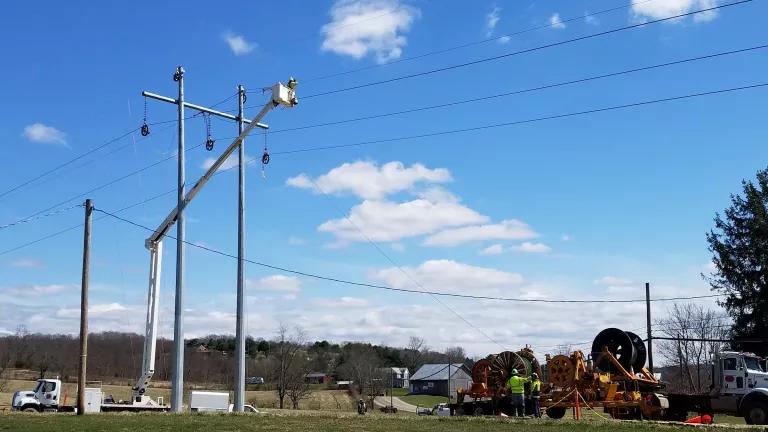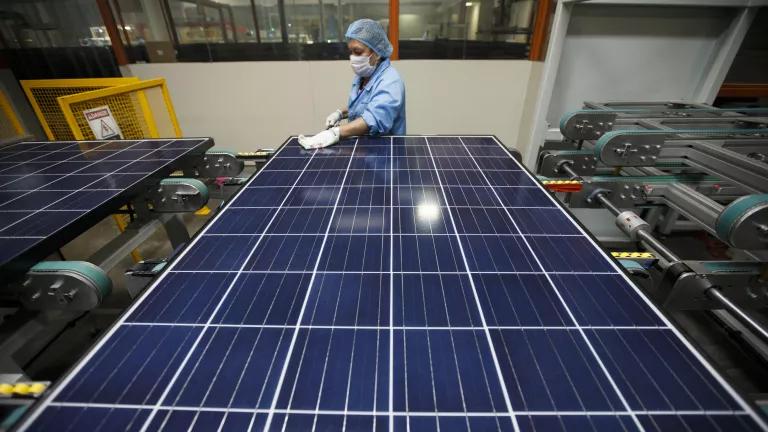
America’s largest natural gas leak not only displaced thousands of southern Californians living near Porter Ranch for months, but the consequences of the Aliso Canyon leak may now lead to blackouts this summer and winter for people throughout California. The best way to prevent that? Deploy clean energy strategies to ensure people’s safety – and reliable electricity service. We’ve done it before.
Fossil fuels are risky business
As with natural gas, there is risk with every energy resource. Critics of clean energy often highlight its alleged uncertainties. For example, the specific amount of energy savings from energy efficiency (making our appliances waste less energy or better insulating our homes) can’t be guaranteed and we can’t ensure that clouds won’t pass by and interrupt solar energy coming from panels (that emit no pollution).
But the reality is that the gravest threats to reliability of our electric transmission grid in recent history have come from giant, conventional, power plants. In 2012, the malfunction and subsequent retirement of the behemoth nuclear plant in San Onofre presented grid planners and regulators with the biggest possibility that Californians could lose their power. (And clean energy is playing a critical role to replace that plant.) Today, our significant reliance on natural gas generation presents us with a new major risk to keeping the lights on.
From blowout to blackouts
Last Friday, the joint energy agencies in California warned that because Aliso Canyon has been shut down, there is a risk that people’s electricity gets cut off this summer, potentially occurring on 14 days. How exactly does shutting down Aliso Canyon lead to potential blackouts this summer and winter? California gets almost half of its electricity from natural gas generation, and a similar proportion in the critical region around Porter Ranch. Aliso Canyon was California’s largest natural gas storage facility. Without normal (or any) flows from Aliso Canyon, natural gas power plants might run out of natural gas to burn – and have to shut down, during times of peak demand. But there are strategies to deal with this problem, as the joint energy agencies highlighted at Friday’s workshop. Clean energy could come to the rescue of this natural gas fallout and preserve Californian’s access to safe, reliable power – once again.
The summer savior: demand response and local coordination
The joint agencies call for substantial increases in “demand side” resources like demand response and energy efficiency. These are well-established programs developed and executed by regulators and the utilities. This is a familiar and appropriate call to action. During the infamous California Electricity Crisis more than a decade ago, demand response and energy efficiency played pivotal roles in keeping the lights on.
In early May 2001, the National Electric Reliability Council grimly forecasted hundreds of hours of rolling electricity blackouts in store for California during the coming summer (because there would not be sufficient supply available to meet the level of electricity demanded).
But not a single blackout occurred that summer. The reductions in electricity demand that helped avert these disasters were no accident. The state leveraged a host of policies and incentives to help Californians cut their energy needs. Conservation efforts were impressively widespread; a full one-third of residential customers reduced their demand by more than 20 percent. The demand reductions achieved in 2001 effectively utilized the state’s well-established energy efficiency infrastructure, and culminated in “the most aggressive and comprehensive energy conservation and efficiency effort in the history of our state,” according to the California State and Consumer Services Agency.
The joint agencies also plan to increase coordination among utilities and the grid operator, as well as between utilities themselves. For example, the Independent System Operator (which runs much of the electric grid in the region), the Los Angeles Department of Water and Power (which uses gas to generate electricity in LA), and Southern California Gas Company (which owns Aliso Canyon) can reduce the risk of blackouts by sharing more information with each other about anticipated gas flows and electricity needs, and changing financial practices that avoid the unnecessary use of gas, such as physical gas hedges. California is already moving in the direction of increased coordination for electricity operations (like trading more energy with our neighboring western states); this crisis could be an opportunity to demonstrate further benefits of coordination among various utilities and grid operators, whether inside or outside of California.
Avoiding these fossil risks in the future
In the long run, regulators should account for these risks and costs when assessing the relative value of clean energy options that don’t burn fossil fuels, like increased energy efficiency, demand response, and renewable energy. California can invest in more energy efficiency, demand response (paying customers to temporarily alter their electricity use), and renewable energy and clean integration solutions, instead of more natural gas power plants and infrastructure. Building that clean energy future avoids some of the risks of relying on fossil fuels—and regulators should price that benefit into how they value clean energy.
State officials should also think hard about making long term investments in fossil fuel infrastructure – whether it’s new natural gas power plants or new gas lines to new homes – given its demonstrated safety and reliability risks like the Aliso Canyon storage facility leak, or just really cold weather like the “Polar Vortex” (which threatened reliability in the east and caused price spikes in the west). Not to mention the greenhouse gas risk of this leak – emitting more GHGs from this one site than the entire country of Greece emits in a year. Given the prevalence of clean energy alternatives in California, we can mitigate these fossil risks moving forward.

Once again, California is at a crossroads for electric reliability. And once again, state officials should rely on clean—and safe—energy resources like demand response and energy efficiency to diminish the risk of blackouts this summer.



